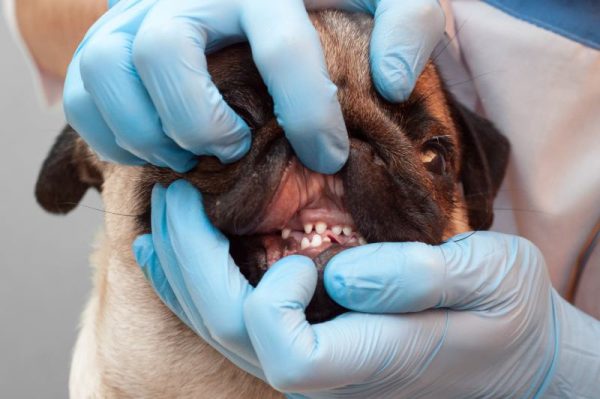Beagles are generally considered to be a healthy dog breed that does not have many health issues if they are cared for properly. Most health issues that a beagle may acquire will depend on their genetics, diet, and care.
The beagle may be hardy, but there are still some common health issues that this dog breed has been known to get, which we will discuss in this article.

The 7 Common Beagle Health Issues
1. Obesity
Beagles can become obese quite easily which puts them at risk of developing other health issues such as joint problems. The beagle has short legs with a long, rounded torso which means that the beagle’s legs take a toll with all the extra weight on their bodies.
This dog breed is also known for having a hearty appetite, which makes it important to feed your beagle a healthy and balanced diet suited to their lifestyle. If your beagle does become obese, a veterinarian can help you take the right measures to get your beagle back into shape and help manage their weight with the correct diet and exercise.
If you need to speak with a vet but can't get to one, head over to PangoVet. It's our online service where you can talk to a vet online and get the personalized advice you need for your pet — all at an affordable price!

2. Canine Intervertebral Disc Disease (IVDD)
This is a painful condition that occurs when part of a beagle’s spinal disc ruptures or slips out of place and presses on the spinal cord. This affects a beagle’s mobility, and they may show a lot of discomfort even when completing basic tasks like walking around, getting up out of a resting position, or going up and down stairs. A beagle may also yelp when performing activities and may present a variety of symptoms. IVDD is usually a degenerative condition of the spinal discs but signs may appear to come on suddenly.
3. Cherry Eye
Cherry eyes occur when the third eyelid gland prolapses (pops out), and it can be caused by a weakened or broken attachment. It is most common in beagles that are younger than 2 or 3 years of age and if the condition is left untreated, it can progress to other health issues such as conjunctivitis. The third eyelid gland is usually secured at the eye’s inner rim with a fibrous attachment, however, if the tissue deteriorates it can lead to cherry eye, which looks like a circular red bulge in the middle corner of the eye.
This condition is uncomfortable, and your beagle may paw at their eye and have difficulty closing and opening their eyes fully.

4. Canine Hip Dysplasia
Beagles are prone to hip dysplasia which happens when the beagle’s hip sockets and ball do not develop properly or are damaged from high-impact activities. The ball and socket will have some laxity and fit poorly together, eventually resulting in arthritic pain and poor mobility of the hind legs. This health issue can be caused by a combination of environmental factors, obesity, or genetics where the parent beagles have passed on the hip dysplasia gene to their litter.
5. Canine Otitis Externa
Since beagles have long, droopy ears, they are at risk of developing ear infections and problems with their ears. There are many different causes of otitis externa in beagles, whether from a disease of their ear from parasites to infections and inflammation of their ear.
This condition causes your beagle’s ears to look inflamed, and swollen, and infections may cause a yellow discharge to leak out. This can cause the Beagle to shake their head in discomfort, which can cause further issues to develop from the constant head shaking, pawing, and rubbing of their ears.

6. Hypothyroidism
This is caused by a dysfunction of a beagles thyroid gland which affects their metabolism, activity levels, and heart rate. An idiopathic thyroid gland disease or lymphocytic thyroiditis (immune-mediated illness) can cause hypothyroidism in beagles.
It is believed that genetics play a role in the development of this condition, with lymphocytic thyroiditis being the main cause of hypothyroidism in dogs when the immune system sees the thyroid as foreign in the body and fights it.
When it comes to idiopathic thyroid gland atrophy, the normal tissue in the thyroid is replaced with adipose tissue. This condition can be managed with the help of a veterinarian; however, it cannot be cured. Treatment typically includes hormone therapy replacement or chronic medication that will need to be administered to your beagle daily.
7. Epilepsy
Epilepsy in beagles is usually a hereditary condition; however, it can also be caused by certain illnesses such as distemper, toxins, trauma, and blood chemistry issues. This is a chronic disease that causes repeated seizures and can greatly lower your beagles quality of life. Beagles suffering from a seizure brought on by epilepsy will shake, drool, lose consciousness, and suffer from muscle twitching.
It is important to take your beagle to the veterinarian right away and take the correct measures to ensure your beagle is not at risk of being injured while seizing.


Conclusion
All dog breeds are prone to developing health issues. However, these are the most common health issues that have been identified in beagles. By ensuring that your beagle is kept healthy with a good diet, regular exercise, and routine veterinarian check-ups, then you can help keep your beagle healthy. Genetic conditions may be difficult to prevent, but most can be avoided by getting your beagle from a trustworthy breeder.
- Related Read: Why Are My Dog’s Eyes Red?
Featured Image Credit: Nestor Rizhniak, Shutterstock


















